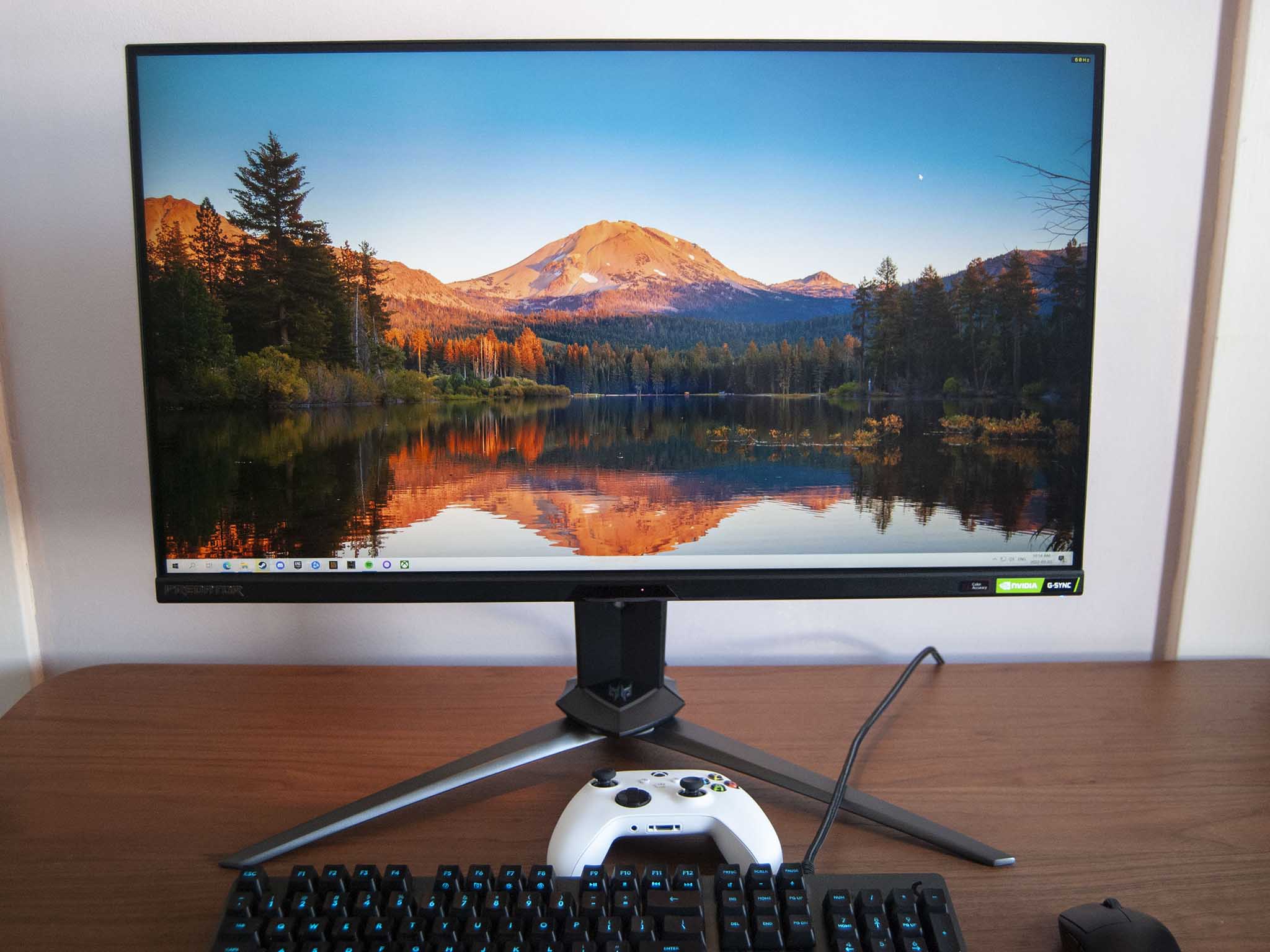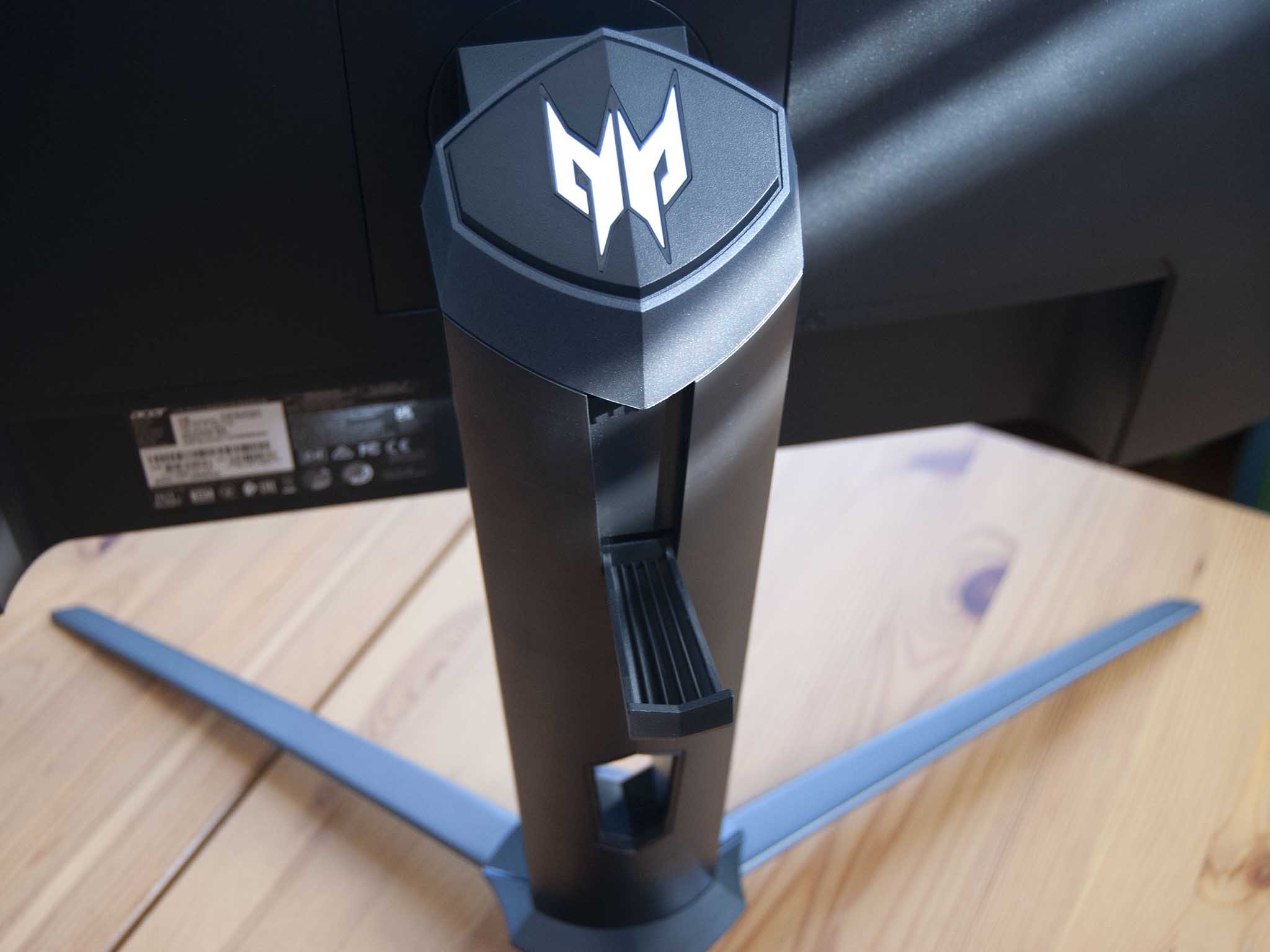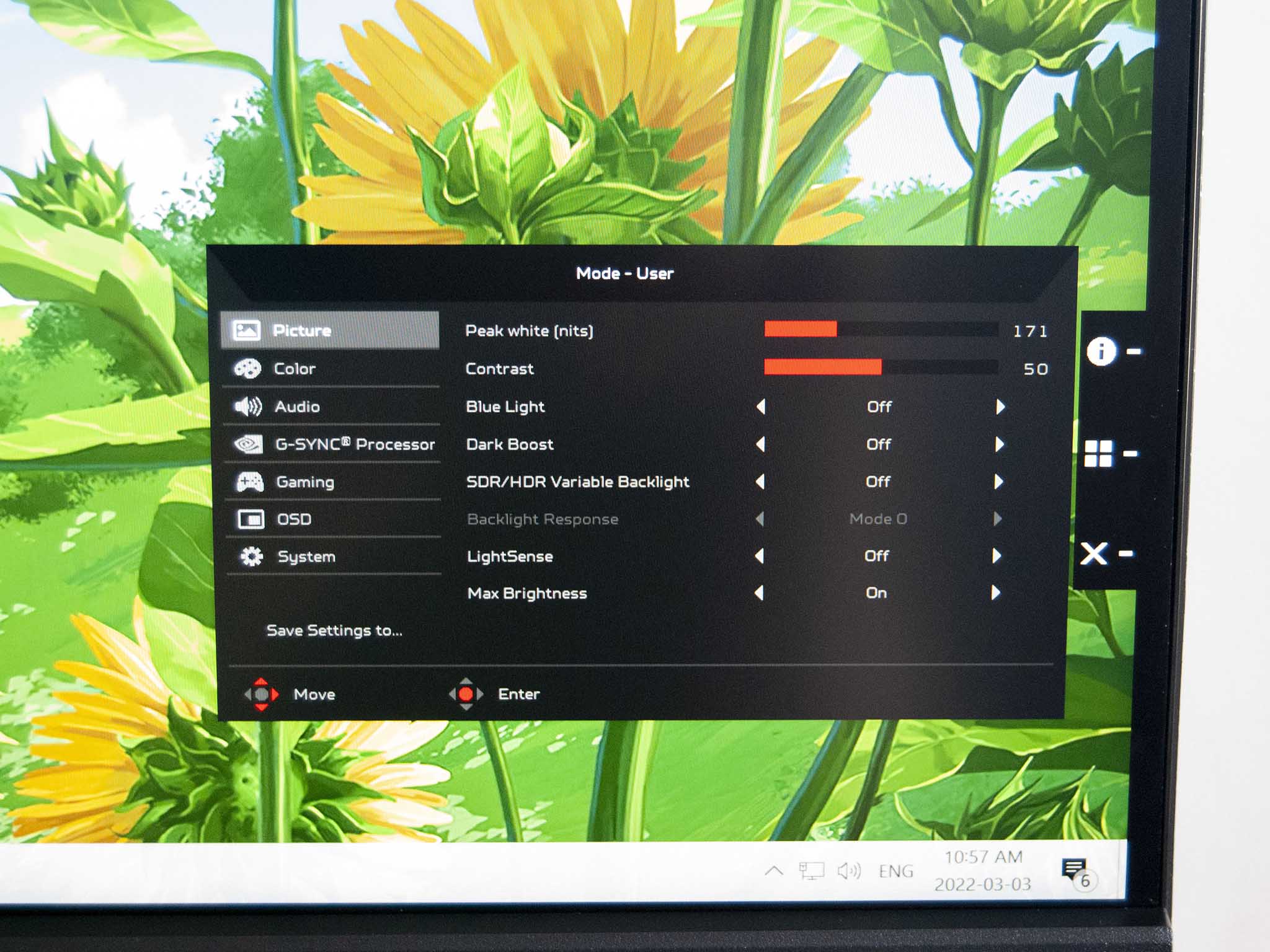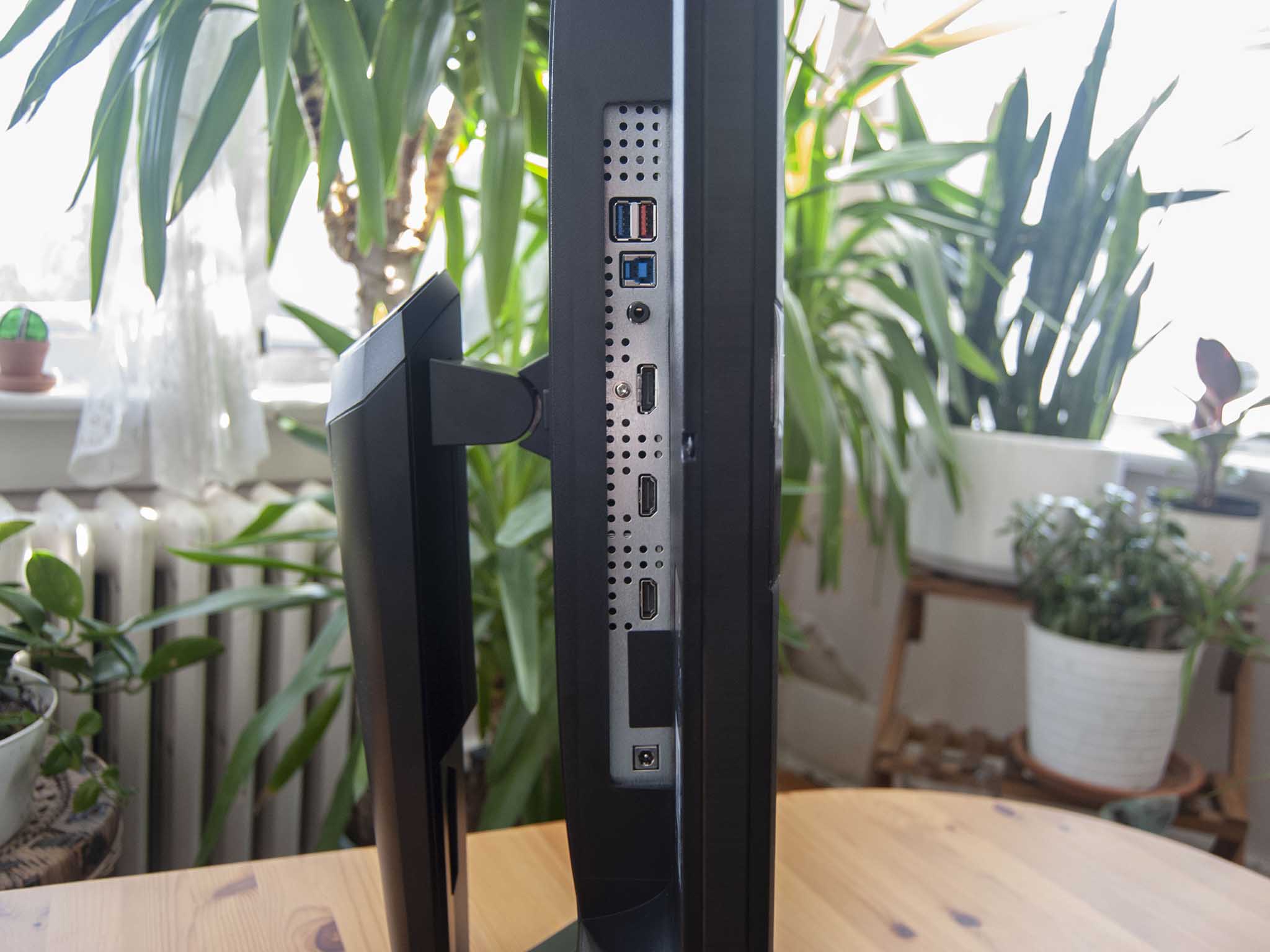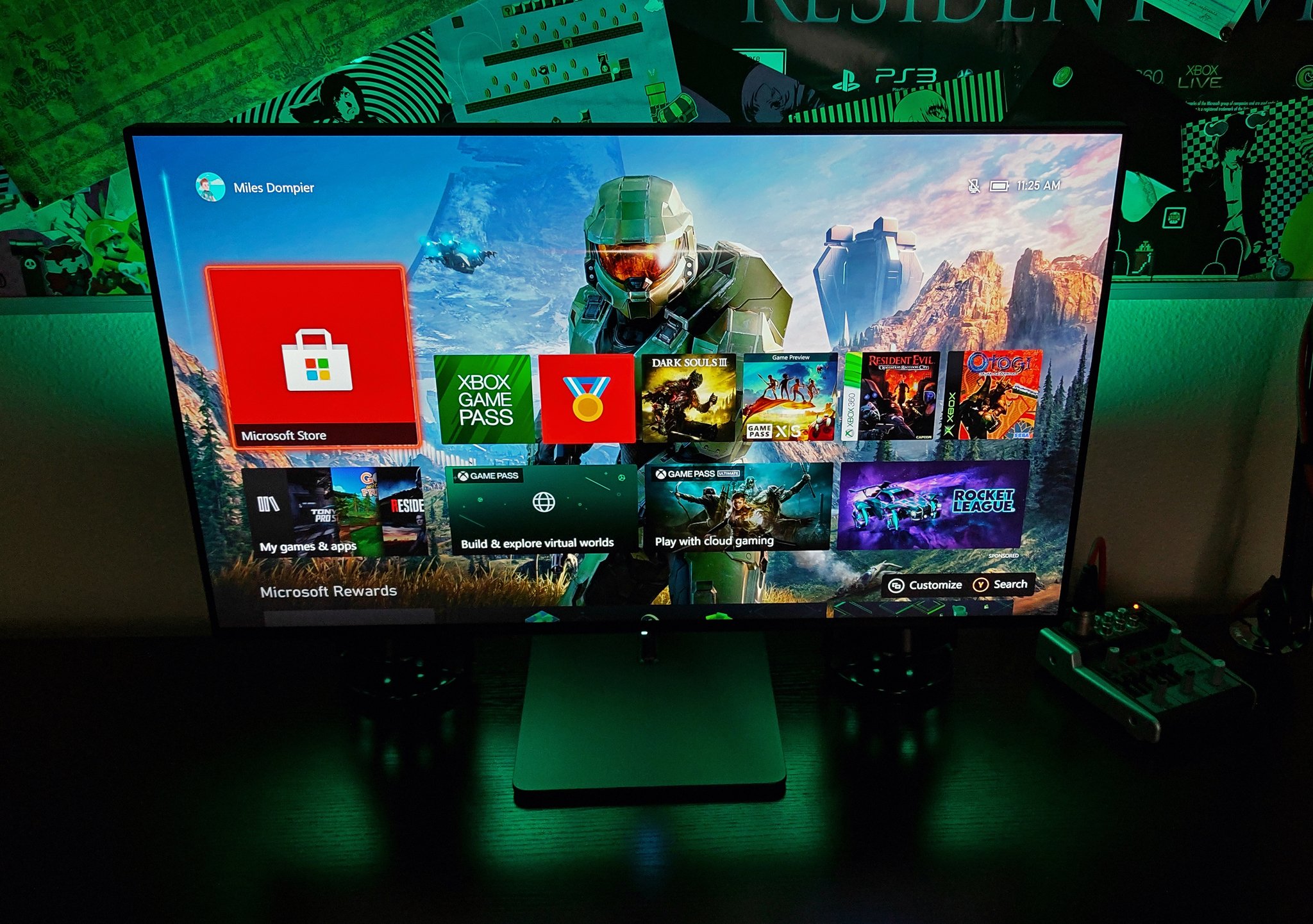As 4K UHD resolution becomes more common thanks to more powerful PC and console hardware, monitors must keep up. And while there have long been 4K displays on the market, those with high-end competitive gaming specs and features are a lot more rare (and expensive). The Acer Predator X28 had a late-2021 reveal and an early-2022 launch, with limited availability ever since. I've been using this monitor for a few weeks to see what it's all about, and to help anyone who's hoping to find stock figure out whether it's worth the money.
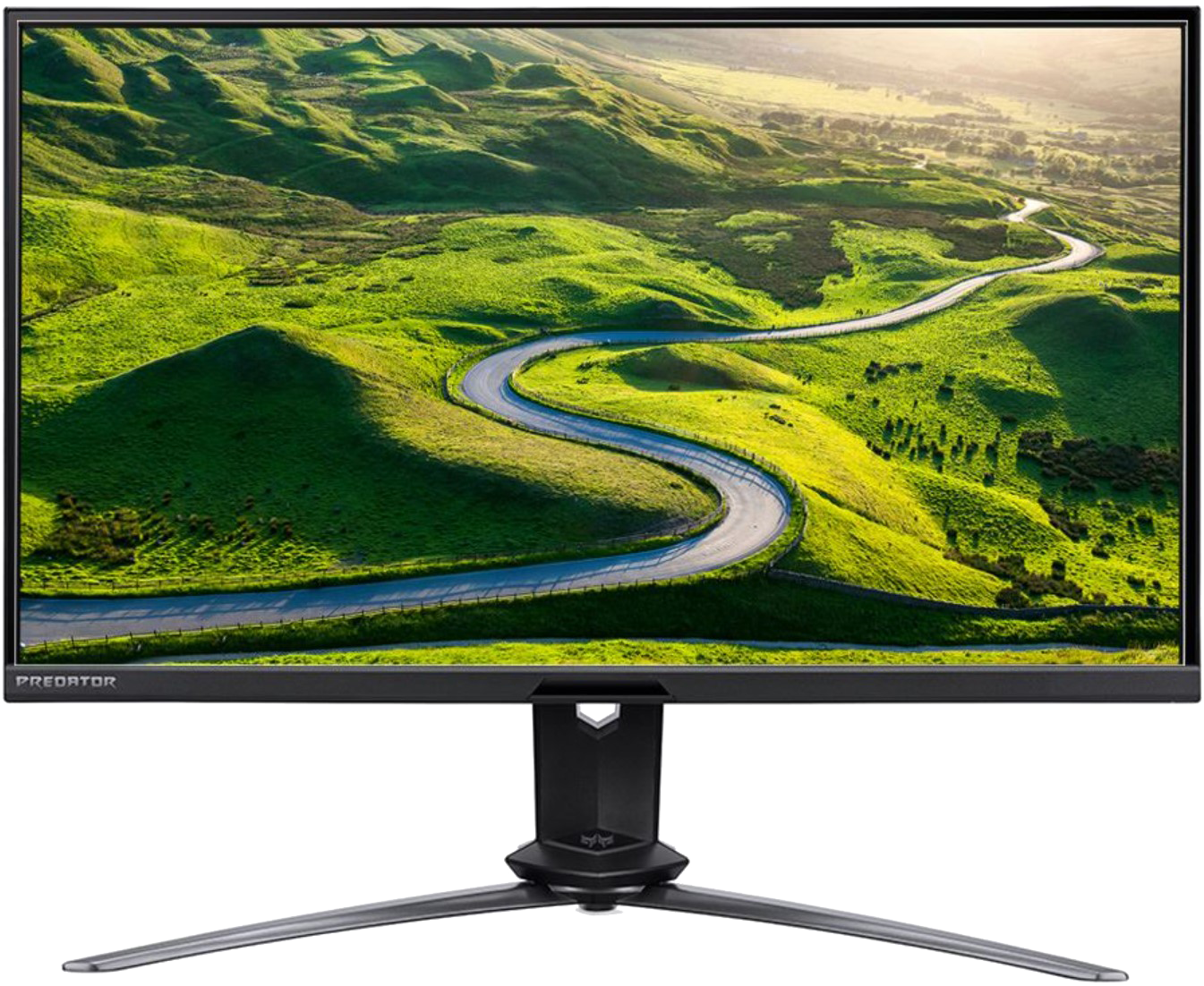
Bottom line: Acer's Predator X28 is a gorgeous 4K monitor with competition-level refresh rate and response time, as well as full NVIDIA G-Sync and NVIDIA Reflex. Availability is limited, and it's not the best pick for consoles due to HDMI 2.0 ports, but otherwise it's a tempting choice for those with high-end PCs that can keep up with the high resolution.
Pros
- 4K with 152Hz (OC) refresh rate
- TÜV Rheinland Eyesafe certified
- Excellent color and contrast
- Auto color and brightness, human presence detection
- Full NVIDIA G-Sync with built-in module
Cons
- Limited availability
- No HDR local dimming
- HDMI 2.0
- Extreme overdrive inverse ghosting
Acer Predator X28: Price, availability, and specs
Acer supplied Windows Central with a review unit of the Predator X28. This is a 28-inch monitor with a 4K UHD resolution, 16:9 aspect ratio, NVIDIA G-Sync module, and maximum 152Hz refresh rate.
Acer had the price listed at $1,300 at launch, though that's not what you'll pay. The Predator X28 seems to be exclusively available at Micro Center, with a long-lasting rebate that brings the price down to $850. That's a lot easier to swallow. However, the monitor is only available for in-store pickup. You're seemingly out of luck if there's no Micro Center nearby. This will hopefully change in the near future.
Here's a look at the listed specifications for the Predator X28.
| Category | Spec |
|---|---|
| Screen size | 28 inches |
| Resolution | 3840x2160 (UHD) |
| PPI | 157 |
| Aspect ratio | 16:9 |
| Panel | IPS WLED backlight |
| Refresh rate | 152Hz (OC) 144Hz (native) |
| Response time | 1ms (GtG) |
| Adaptive sync | NVIDIA G-Sync module G-Sync Esports Mode |
| HDR | VESA DisplayHDR 400 |
| Contrast | 1000:1 |
| Color | 1.07B colors 8-bit + FRC |
| Brightness | 450 nits (typical) Up to 400 nits (HDR) |
| Audio | Dual 2W speakers |
| Connectivity | Two HDMI 2.0 DisplayPort 1.4 Three USB-A 3.0 USB-A 2.0 USB-B (up) 3.5mm audio |
| VESA | 100mm x 100mm |
Acer Predator X28: What I like
The Acer Predator X28 is a bit of a mix between professional and gamer when it comes to design. The plastic stand sits on wide metal feet, with Predator logos stamped on the angular base and top panel. The back of the monitor is fairly plain, with an angled edge for venting and some Acer branding in the corner. There's no RGB or obtrusive styling. The monitor offers excellent ergonomics, with adjustments for tilt, swivel, pivot, and height.
Bezel around the screen is thin, and the chin below doesn't take up too much space. There's room for some Predator branding on the bottom-left corner and a wide sensor in the middle. Acer's LightSense, ColorSense, and ProxiSense features are all in play here thanks to this sensor. The monitor will read ambient room lighting and adjust the screen's brightness and color temperature to match. You can disable this setting in the OSD menu if you prefer a dynamic brightness.
One thing I appreciate as someone with light sensitivity is the accompanying "peak white" setting that lets you put a cap on brightness no matter how much ambient light the sensor reads. The ProxiSense feature can tell when you walk away from the monitor, acting sort of like human presence detection that's becoming more common in laptops. It's a neat feature that can help save energy by dimming and eventually putting the monitor to sleep when you walk away, though I'm not entirely sure how effective it really is. Could be that I don't sit close enough for it to function properly.
All the latest news, reviews, and guides for Windows and Xbox diehards.
Right out of the box, the Acer Predator X28 has superb color and contrast. Each display comes with a color calibration testing report for average Delta E<2, gray-scale, and gamma. I used a SpyderX Pro colorimeter to measure color reproduction, getting back 99% sRGB, 82% AdobeRGB, and 87% DCI-P3. Acer claims 90% DCI-P3, so that's a bit lower than expected. I also got back 465 nits brightness at peak.
The Acer Predator X28's built-in G-Sync processor, Reflex Latency Analyzer, and Esports Mode makes it ideal for high-resolution competitive gaming.
The Predator X28 makes a claim for competitive play thanks to a 144Hz native refresh rate that can be boosted up to 152Hz with overclock enabled in the OSD. This is joined by a 1ms (GtG) response time that can drop even lower if you flip it to Extreme overdrive in the same menu. While the Normal overdrive worked fine, Extreme mode caused some serious overshoot ghosting in games. I had to leave it on Normal to get a clear picture.
Only the best graphics cards can push this monitor to its limit at 4K. And while the monitor will work with AMD cards and FreeSync, the Predator X28 is a full-fledged NVIDIA G-Sync monitor with a built-in processor. That's a step up from simply being a "G-Sync compatible monitor," with proper rating all the way up to the maximum refresh rate.
With this discrete G-Sync module also comes NVIDIA's Reflex Latency Analyzer hardware. As the name suggests, it measures, displays, and reduces mouse, display, and overall system latency. Most casual gamers aren't going to use this beyond curiosity's sake, but competitive and professional gamers will find it useful. It can be enabled in the OSD. Rounding out these added features is NVIDIA's Esports Mode. It ups the screen's vibrance when enabled, and it's specifically tuned for competitive play.
The display has a number of features that help protect your eyes. The flicker-free backlight is joined by Acer's BlueLightShield Pro that cuts out blue light without affecting color. The display is also TÜV Rheinland Eyesafe certified. If you're sitting down for a marathon gaming session, your eyes won't take quite as much of a beating.
Acer Predator X28: What I don't like
The Acer Predator X28 has a generous selection of ports, including a couple of USB-A 3.0 on the side for easier accessory hookup. There's another USB-A 3.0, USB-A 2.0, USB-B (upstream for connecting the monitor's USB hub to your PC), DisplayPort 1.4, and two HDMI 2.0b. This is all right for PC use thanks to DP 1.4, but anyone splitting time between PC and console will want a monitor with HDMI 2.1 to achieve the higher 4K frame rates.
VESA DisplayHDR 400 support lends a bit of vibrance to compatible content, but don't expect a true HDR experience.
There are a couple of 2W speakers on the bottom edge of the monitor. They do a good job for listening to podcasts or music while working — not to mention video conferencing — but for anything else I recommend checking out one of the best PC gaming headsets. Sound isn't loud or clear enough for competitive or truly immersive gaming, but I can appreciate the addition for general use.
HDR support isn't really a main selling feature here, so it's not as big of a deal that the display lacks local dimming. You get VESA DisplayHDR 400 support that gives a mild vibrance boost to compatible content, but don't expect a true HDR experience. There are other monitors with far better HDR support if that's what you're looking for.
One last thing to note is the stand's height limit. I'm taller than average and find that a lot of monitors don't get high enough to be used comfortably without a riser (which can be difficult with a pronged stand). The Predator X28 falls into this category despite its generous ergonomics. I am glad to see that VESA mounting (100mm x 100mm) can be used to take care of this issue.
Acer Predator X28: Competition
The Acer Predator X28's HDMI 2.0 ports and NVIDIA G-Sync module place it heavily on the side of PC gaming. If you're looking for a 4K monitor for consoles that supports HDMI 2.1, something like the 27-inch Eve Spectrum is more suitable. It includes NVIDIA G-Sync compatibility, AMD FreeSync Premium Pro, HDR 600 (with global dimming), 1ms response time, and 144Hz refresh rate. It costs about $800 if you buy without a stand, with another $100 added on with a stand.
And for a more direct competitor to the Predator X28, check out the Samsung Odyssey G70A. It's a 28-inch 4K gaming monitor 144Hz refresh rate, 1ms (GtG) response time, HDR 400, G-Sync compatibility, FreeSync Premium Pro, and HDMI 2.1 ports. The Odyssey G70A will save you some money if you don't absolutely need the discrete G-Sync module that comes with the Predator X28.
Getting back to PC monitors, some might prefer an ultrawide picture. Acer's Predator X38 has a 3840x1600 resolution, 21:9 aspect ratio, 175Hz refresh rate when overclocked (144Hz native), 1ms response time, and HDR 400 support. Color reproduction is excellent with 100% sRGB, 90% AdobeRGB, and 96% DCI-P3. It also has G-Sync Ultimate support. This is a lot of screen, but it costs more than $1,600.
For a far more affordable ultrawide, check out the BenQ Mobiuz EX3415R. For about $850 you get a 3440x1440 resolution, 144Hz refresh rate, 1ms response time, HDR 400, and FreeSync Premium.
Our collections of the best PC gaming monitors and the best 4K PC monitors have more options to browse.
Acer Predator X28: Should you buy it?
You should buy this if ...
- You want the full NVIDIA G-Sync experience thanks to built-in module
- You're primarily using the screen with a PC
- You have a PC capable of achieving frame rates beyond 4K @ 60Hz
- You have about $850 to spend on a monitor (and you live near a Micro Center)
You shouldn't buy this if ...
- You want 4K @ 120Hz with modern consoles (get something with HDMI 2.1)
- You have a PC that's better suited for 1080p or 1440p
- You run an AMD Radeon GPU (G-Sync processor adds unnecessary cost)
The Acer Predator X28 is an impressive display. Not only is the 4K resolution crystal clear at 28 inches, but the performance specs can also keep up with competitive play. Color is good enough that you could use the screen for editing purposes when you're not fragging, though the X28 is most comfortable with games. The panel is easy on the eyes, there's automatic brightness and temperature controls, and the HDR 400 support is a bonus despite its limitations.
The full NVIDIA G-Sync module with Reflex and Esports Mode takes things to the next level, though it does add some cost. The screen works with AMD GPUs — I tested with a Radeon RX 6800 without issue — but it's best paired up with a great NVIDIA GPU. In the same sense, anyone looking to pair the monitor with a console should look for a screen with HDMI 2.1 connectivity.
One of the biggest issues with the Predator X28 is just how difficult it is to buy. Those in the U.S. have only Micro Center to shop at, with no option for online checkout. You're out of luck if you don't live near a physical store. I found no retail listings in my native Canada. Hopefully this will change for all regions in the future, as this is one of the more affordable 4K monitors with full G-Sync and boosted refresh rate. The Predator X28 is a snazzy monitor that, when paired with some high-end PC hardware, will transform your gaming experience.

Cale Hunt brings to Windows Central more than nine years of experience writing about laptops, PCs, accessories, games, and beyond. If it runs Windows or in some way complements the hardware, there’s a good chance he knows about it, has written about it, or is already busy testing it.
